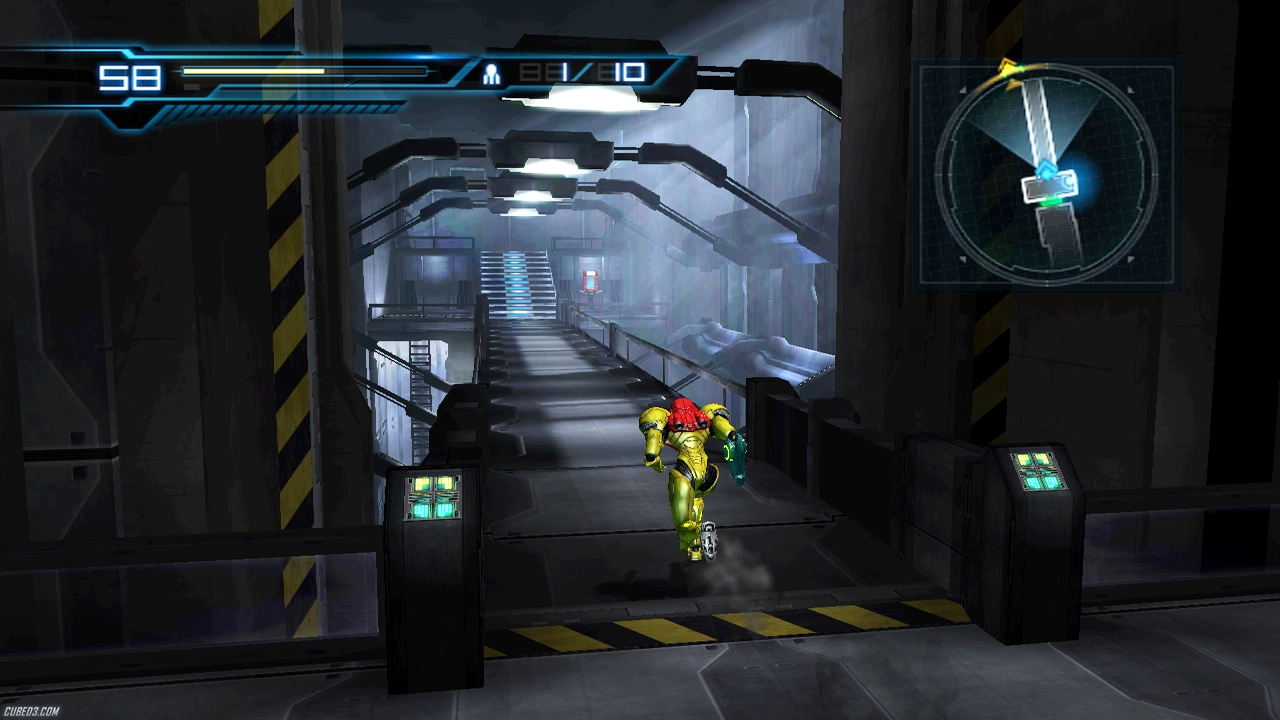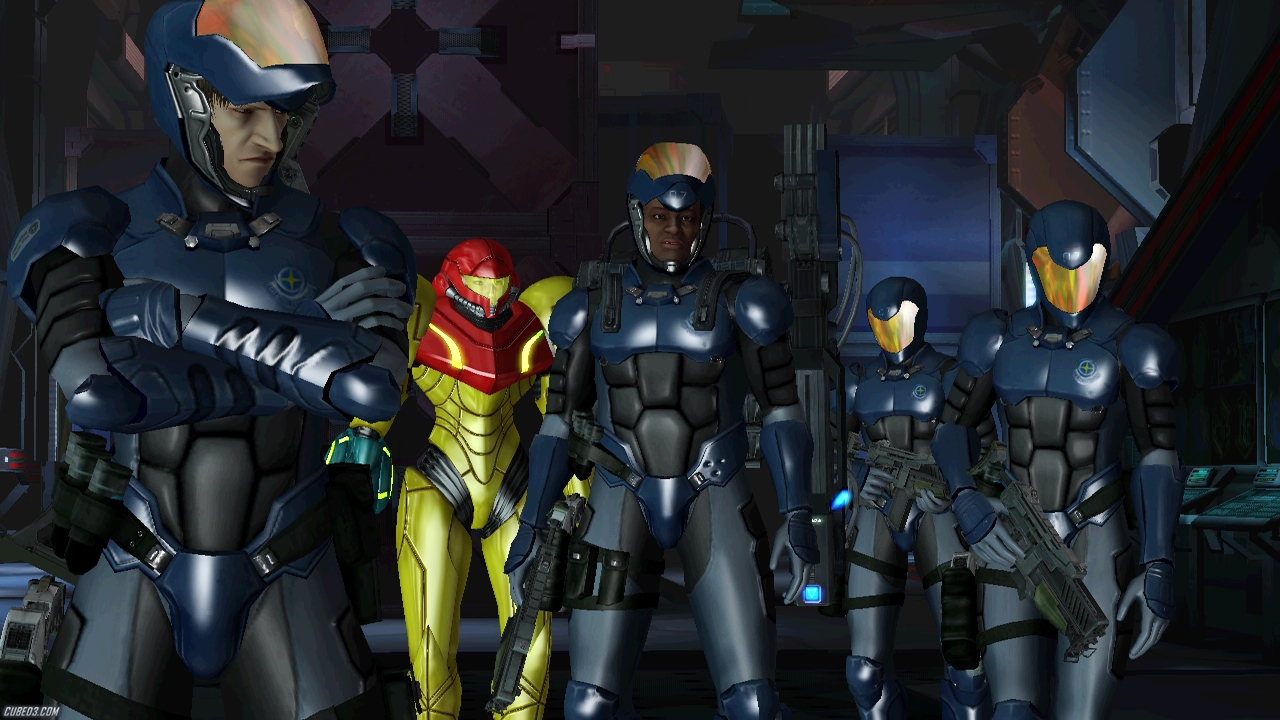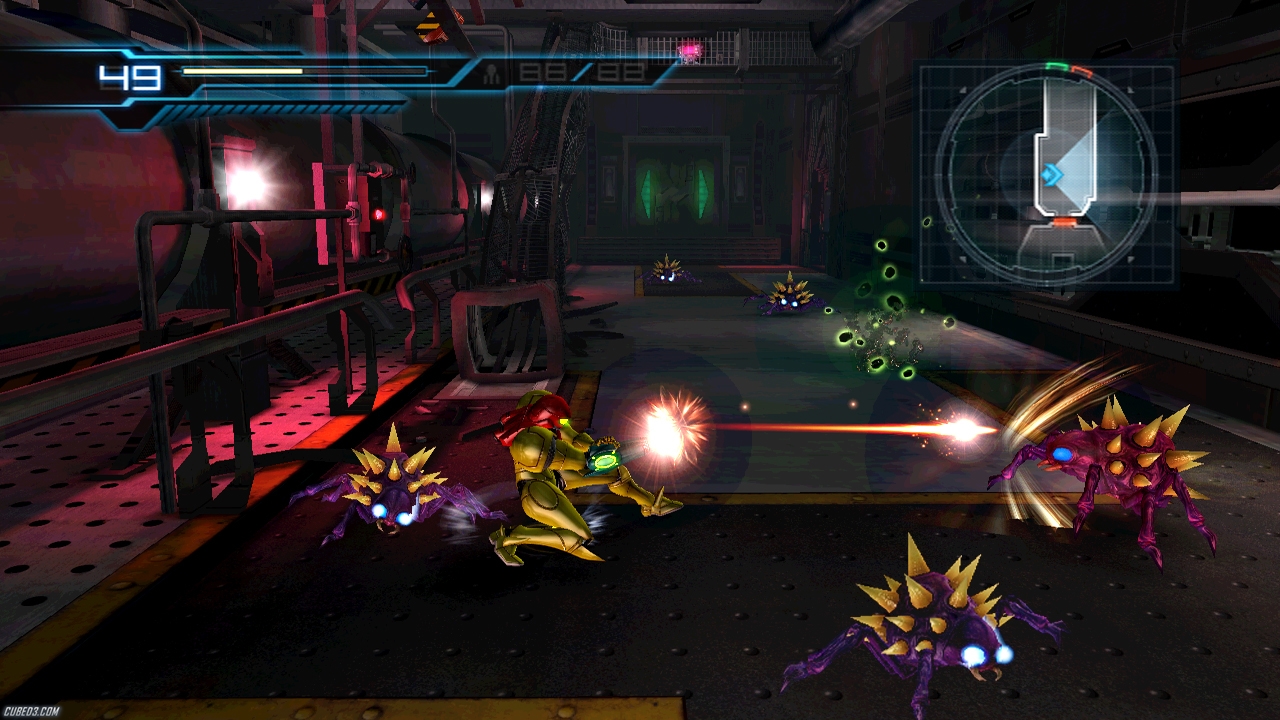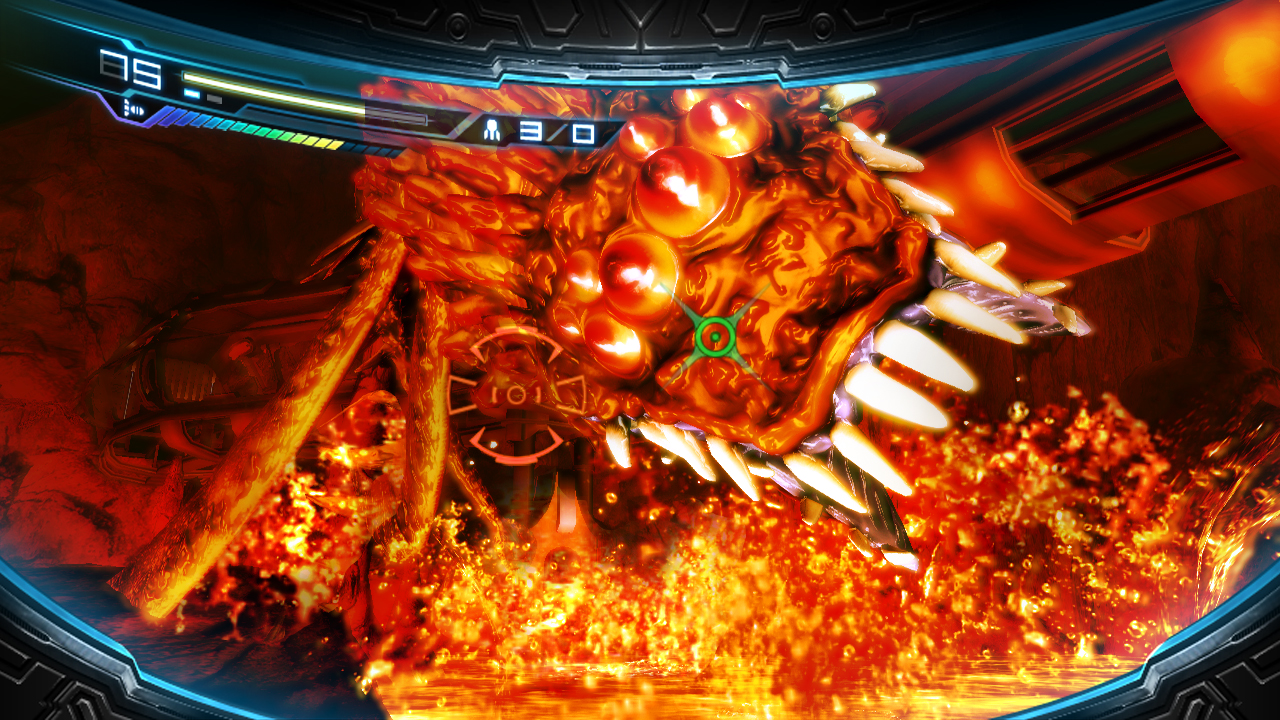Metroid: Other M (Wii) Second Opinion Review
By Jordan Hurst  14.08.2016
14.08.2016

Metroid: Other M takes the most well-respected female character in gaming and turns her into an overemotional, remarkably dim-witted, monologue-spewing machine with an Electra complex. The instinctive response to this rather misogynistic reputation is usually to blame developer Team Ninja, but the studio actually washed its hands of the game's story component, leaving the guilt solely with series co-creator Yoshio Sakamoto. Both parties are responsible for seemingly building an entire game around these traits, however. Unsurprisingly, that game feels broken and schizophrenic.
It aims to be very different from previous Metroid titles; it's much less about exploration and much more about acrobatic combat and personal narrative. The combat works here and there; the narrative is a disaster. It begins with series protagonist Samus Aran, fresh from the end of Super Metroid, again answering a distress call from another space station where dangerous creatures were being researched and, surprise, grew violent and attacked the scientists working there. Samus meets up with a squad of Galactic Federation troopers while sorting out the situation, including Adam, a sort of father figure from her past.
Depressingly, the story's unoriginality is not its worst problem - that would be its overwhelming oppression of Samus' character and its mind-numbing lack of logic. It's established early on that one of the (completely uncharacterised) Federation soldiers is a traitor, and it's a major plot element...until the game just kind of forgets about it three hours later. Especially damning is the second half of the plot, which recycles a couple of major plot twists out of past Metroid games wholesale, notably Metroid Fusion. Seriously, the day Metroids stay extinct will be the day Crocomire gets his own game. Finally, there's the embarrassingly idiotic authorisation system. In Other M, Samus technically has all her regular power-ups from the beginning; she just doesn't use them because Adam hasn't authorised them. This leads to a section where she enters the game's token lava world without heat protection, and then, after about half an hour of nearly burning to death, she's told she's allowed to activate it.

It would be tolerable if that was the only point where the character thoughtlessly obeys her new surrogate father, but stuff like this happens throughout the entire game. Nintendo has subtly characterised Samus over the course of the series: she shows independence by working alone in a dangerous profession; she demonstrated a strong moral compass by defying the irresponsible orders of the Federation in Fusion; and she already displayed her softer side in the ending of Metroid II. There was no need to tie a leash around her neck and have her ramble on about motherhood for an entire game. As if now being a clinically depressed and especially wordy Princess Peach wasn't bad enough, her voice actress is trying her hardest to sound emotionless and mechanical, which, ironically, would have probably fit her original personality better. The other voice actors in the game are generally at least passable, so it's especially dumbfounding. One would think the most important thing to do when giving a silent protagonist of 23 years a voice would be to find the best actress you can, so the fans would have nothing but their own nostalgia goggles to blame for any problems.
Speaking of which, Other M frequently tries to evoke the appeal of nostalgia, which is also ironic, considering how obviously the game was going to piss off half the fanbase. To its credit, quite a bit of it is satisfying to the long-time Metroid fan. The music is a decent mix of old and new songs (including some nice selections from Metroid Prime), and when Ridley shows up (yes, Ridley shows up again, though in an unexpected way that's actually quite interesting), his cries even sound like his old Super ones. It occasionally crosses the line between nostalgia and rehash, though, particularly when the plot similarities to Fusion kick in. Additionally, many of the enemies return from the 2D games, especially Super Metroid. This isn't exactly the criticism it sounds like, though; it's nice to see many of the enemies who didn't get the 3D treatment in Prime finally receive it, and they generally work well with the new game mechanics.
Said mechanics borrow liberally from Team Ninja's post-reboot Ninja Gaiden titles, but they're still far from clone status. The first thing to note is that you don't really aim anymore; just face the enemy and shoot, and the auto-aim will do the rest. This works considerably better than most auto-aim systems, because the developers were at least smart enough to avoid throwing out multiple targets with different priorities at once - it's generally best to just shoot everything. As a result, the combat becomes much more about dodging and getting in rhythm with enemy attacks, similar to how Metroid Prime approached first-person shooter gameplay. To this end, players must use the "Sensemove" mechanic, which sends Samus into a quick dive that also fills her Charge Beam meter if timed correctly, more often than shooting. There's also the "Overblast" - a needlessly dramatic way of saying "jump on an enemy's head and jam a Charge Beam down their throat" - and the "Lethal Strike," which is basically a theatrical finishing move against downed opponents.

It's really a shame that Other M drifts so often into its abysmal storytelling, because the core combat is quite fun. Getting into a groove of dodges, jumps and beam blasts is quite exhilarating, as are the over-the-top new abilities. To complement this is a great difficulty level that's hard without being cheap. It also incorporates a "Concentration" mechanic that allows Samus to recover an energy tank if her life is low enough, provided she can stay out of harm's way long enough to use it. It's an interesting implementation of regenerating health - the player can regenerate health, but their ability to do so depends on their dodging skill. There are two problems with the gameplay, though: combat is only one part of it, and the controls are a mixed bag.
On the agreeable end of the spectrum, the controls are responsive and fairly simple, which will likely appease those who were angry with Metroid Prime's convoluted setup. However, in yet another cruel twist of irony, the controls are too simple for the kind of game Other M wants to be. It's got the same problem early PlayStation games had: trying to control a 3D game with a D-pad that just doesn't have the necessary range of motion. This game doesn't have the excuse those ones did, though, because the Wii has the perfectly suitable Nunchuk controller that could have solved the problem. Secondly, missiles return in Other M, and some idiot thought it would be a good idea to restrict their use to the game's first-person mode…which you switch to by pointing the Wii Remote - which you're holding sideways most of the time - at the screen. It's disorienting at best and crippling at worst, because it can take a few seconds to figure out what the hell you're looking at after switching to first-person view, during which time Samus is likely to take a poison stinger to the face.

Of course, combat is only a part of the gameplay, this being a Metroid game and all, but the other part is not the expected open-world exploration. It's more like squinting around for the pixels that seem most out of place. Yes, the game is linear, but that's not the problem. Fusion and Prime 3 were pretty linear, and they turned out great. The problem is that without the Prime games' Scan Visor or something similar, searching for power-ups in a murky 3D environment boils down to looking at every heavily shadowed wall in first-person mode to see if there's something on it that can be blown up.
In addition, there are two extremely baffling recurring scenarios. In the first, the game forces the player into first-person mode to look for something out of place. In the instances where the object is easy to find and the music and ambience are just right, they can be pretty effective at heightening tension. More often than not, though, the object will be something completely irrelevant, and the segment will do nothing but bore and frustrate. In the second situation, Samus slows to walking speed, and the camera zooms in to a Dead Space-like perspective. These had the potential to be interesting, but the fact that weapons are unusable while they're happening makes it obvious that nothing threatening is going to happen until they're over, and they just end up being dull, pointless gimmicks.
In general, Other M is a pretty backwards-thinking game, if its clearly-defined gender politics didn't indicate that. For all the talk about how different it is from previous Metroid titles, things like finishing moves and dodging aren't exactly new ideas, and the complete lack of new power-ups really shows how much it's content to rest on the accomplishments of its predecessors. Of particular note are the graphics, which, through general blockiness and the occasional bewildering lack of textures, tend to make some enemies and environments look like featureless blobs pitifully reminiscent of the N64 days. Some of the more extravagant attacks and boss battles show a surprising amount of detail, making the rough patches stand out even more.

Cubed3 Rating
Subpar
Metroid: Other M is just a game of missed potential the whole way through. The controls could be easily fixed by incorporating the Nunchuk and doing away with the first-person nonsense. A respectable voice actress could have been hired for Samus. Hell, Nintendo could have just started a new series with a new character. That way, the story would be merely bad, instead of bad and a blatant disregard for everything that came before it. Team Ninja has proven it can make great action sequences, but those action sequences are spoiled by the cringe-worthy narrative and embarrassing production values. Nintendo has thankfully chosen to ignore the narrative additions of franchise pariah Metroid Prime Hunters, so here's hoping they do the smart thing and put this one away along with it.
Comments
Comments are currently disabled

 Sign In
Sign In Game Details
Game Details
 Out now
Out now  Out now
Out now  Out now
Out now  Out now
Out now  Subscribe to this topic
Subscribe to this topic Features
Features





 Top
Top

